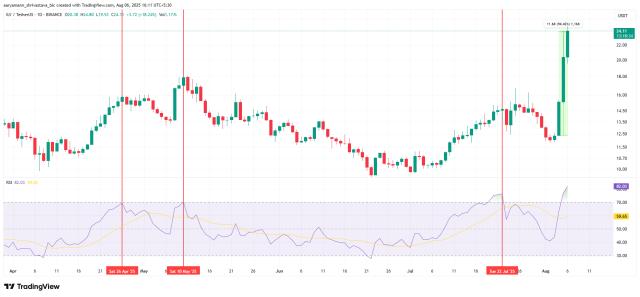Written by: Ye Kai, Huaxia Digital Capital
Introduction
Today, rumors spread that "JD Ant was rejected by the central bank from exiting the stablecoin license," and many internet celebrities quickly deleted their posts, which is a lack of intelligence. Although the Hong Kong stablecoin regulations and new guidelines seem to have added many restrictions that appear to be nullified, what is the essential logic behind this? It is more about restricting USD stablecoins, leaving space for offshore RMB stablecoins; restricting retail stablecoins, and first developing the institutional stablecoin market.
The central bank's rejection of JD Ant is likely not about being excluded from the stablecoin license, but more probably due to being rejected for an offshore RMB stablecoin. Joycoin's target is a Hong Kong dollar stablecoin, and offshore RMB stablecoins will first come from banking-related Chinese institutions (in Hong Kong, Chinese institutions refer to state-owned financial institutions stationed in Hong Kong), rather than JD Ant.
Starting from this topic, let's discuss the possibilities of Hong Kong stablecoins, offshore RMB stablecoins, and digital RMB. To avoid adding trouble to regulators, I declare: the plot is purely fictional, please do not take it literally.
Main Text
Two days before the official implementation of Hong Kong's Stablecoin Regulations, Phoenix Network's Digital Economy Channel interviewed Huaxia Digital Capital about the interpretation of the stablecoin regulations. When asked to describe the relationship between digital RMB and stablecoins in a vivid way, I used a big tree metaphor: Digital RMB and offshore RMB stablecoins are like a new financial tree, rooted in the "black soil" of Shanghai's Lingang Free Trade Zone, with a stem endorsed by the central bank's digital RMB data pulse, branches stretching in the sea breeze of Hong Kong, bearing "CNHC" offshore fruits. The growth of this plant is planned, not mechanically operated, but organically symbiotic. Digital RMB and offshore RMB stablecoins are not mutual substitutes but work together through a "dual-track" mode to promote RMB circulation globally.
[The translation continues in the same manner for the rest of the text, maintaining the specified translations for blockchain-related terms.]On the Hong Kong side, based on the "Stablecoin Regulation", the Hong Kong Monetary Authority requires stablecoin issuers to establish a strict "reserve asset custody and transparency mechanism", using designated local custodian banks (such as Bank of China Hong Kong) to isolate and custody CNHC reserve assets with regular audits, and utilizing blockchain "Proof of Reserve" technology to achieve real-time reconciliation and synchronous updates between on-chain reserve balances and off-chain custodial funds. Additionally, CNHC's multi-chain issuance process, leveraging the immutability of distributed ledger and on-chain tracking technology, uses smart contracts to achieve real-time registration, tracking, and permanent traceability of cross-chain asset transactions, ensuring complete transparency and monitorability of fund flows.
Through this comprehensive regulatory technology approach, Shanghai and Hong Kong can establish a rigorous cross-border fund monitoring system. Every fund movement on the chain can be precisely monitored and traced back to its original source, preventing illegal capital outflows while ensuring efficient cross-border payments and fund security. This cross-domain regulatory technology innovation provides a solid regulatory foundation and technical support for the future internationalization of the RMB and global circulation of offshore RMB stablecoins.
Significance, Risks, and Challenges of the Dual-Track System
The "Digital RMB + RMB Stablecoin" dual-track model is not simply a binary division, but a balanced design that considers efficiency, safety, central bank supervision, and market vitality. From a payment efficiency perspective, a central bank-led digital RMB system, while stable and compliant, is limited in cross-chain capabilities due to operating on a permissioned chain, making it difficult to cover global 7x24 real-time cross-border trading needs. Conversely, relying entirely on the market-driven offshore RMB stablecoin CNHC could face systemic risks such as reserve asset volatility and risk control failures, potentially triggering a confidence crisis if it de-pegs.
The dual-track system precisely addresses this "dilemma": Digital RMB acts like a main highway, ensuring sovereign, identity compliance, and tracing the source of fund flows; CNHC acts like auxiliary roads and branches, quickly and flexibly extending to every corner of the world with RMB demand.
As the Bank for International Settlements (BIS) emphasizes: "Central banks are the root, private institutions are branches", the key to the dual-track system is for central banks to maintain fundamental control while releasing market forces to extend boundaries.
Of course, this architecture is not without challenges. For instance, if Hong Kong's interest rates fluctuate significantly and reserve asset returns cannot keep up, CNHC might face concentrated sell-offs, bringing de-pegging risks; in regions with unclear policies, the chain extension could be interrupted, affecting trade loops; moreover, if the central bank-led cross-border system experiences technical failures, the bridge between dual tracks might fail. Therefore, the future of the dual-track system is full of imagination but requires multi-layered protection through institutional, technological, and global coordination.
In summary, the "Digital RMB and Offshore RMB Stablecoin" dual-track model reflects a delicate balance between financial technology and policy regulation. Shanghai, as the root system of the onshore RMB ecosystem, and Hong Kong, as the global offshore RMB financial hub, are forming a powerful synergy to gradually bring the offshore RMB stablecoin (CNHC) to the global stage. Although this process is accompanied by technological, policy, and market risks, with clear regulation, effective risk control, and technological innovation, the RMB dual-track model is expected to become a highly competitive innovative paradigm in the RMB internationalization process. Looking forward, as more global regions achieve policy coordination and technological improvements, with more global assets priced in offshore RMB stablecoins, the RMB is poised to occupy a more proactive and critical position in the global digital economic wave.








